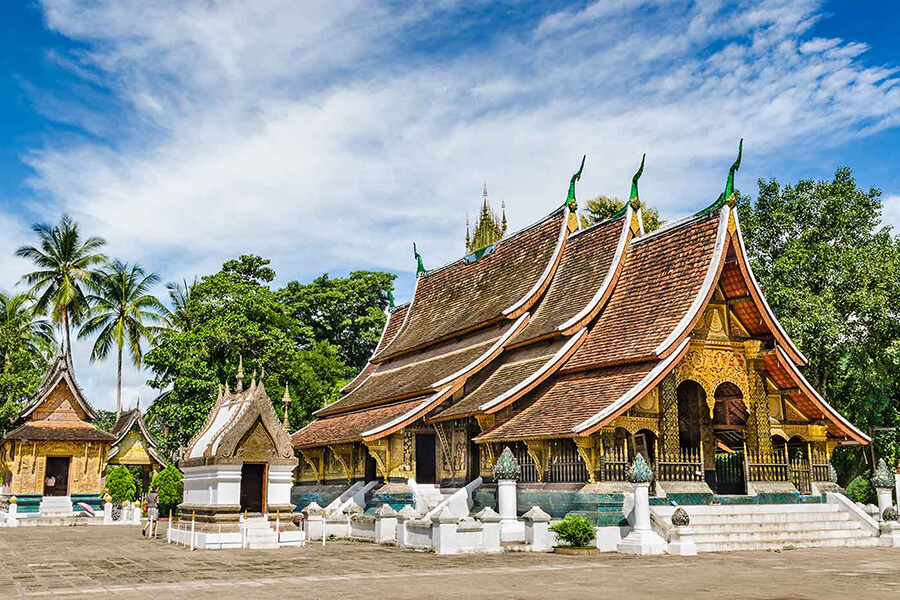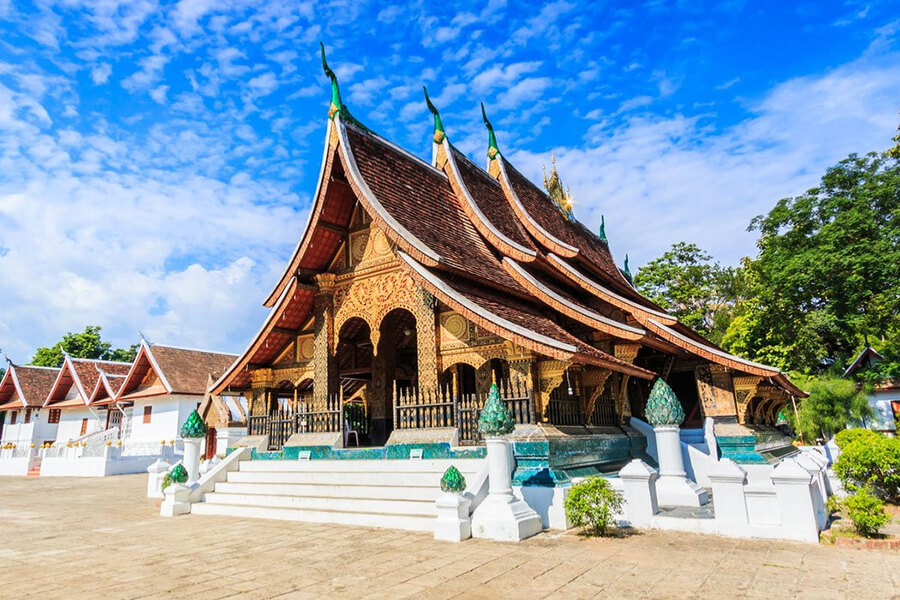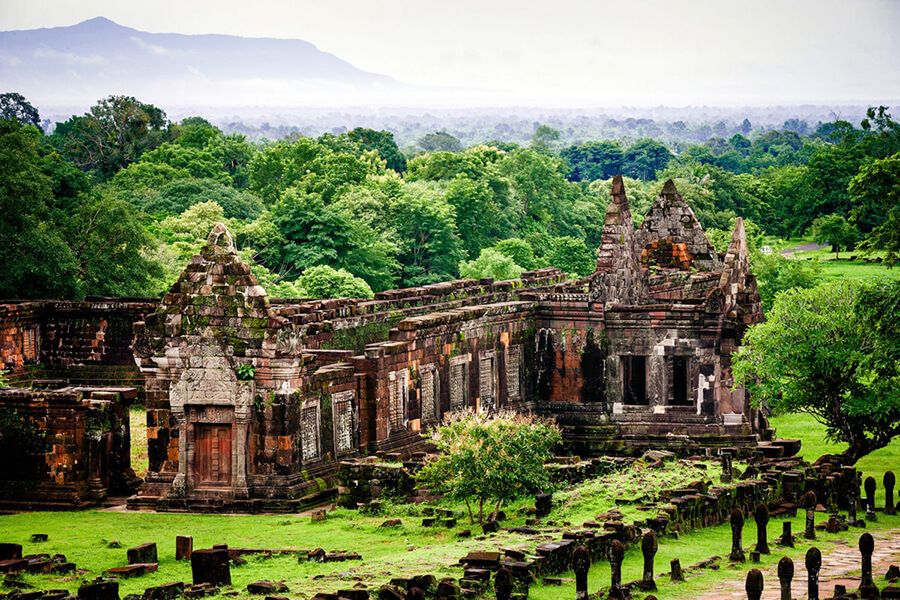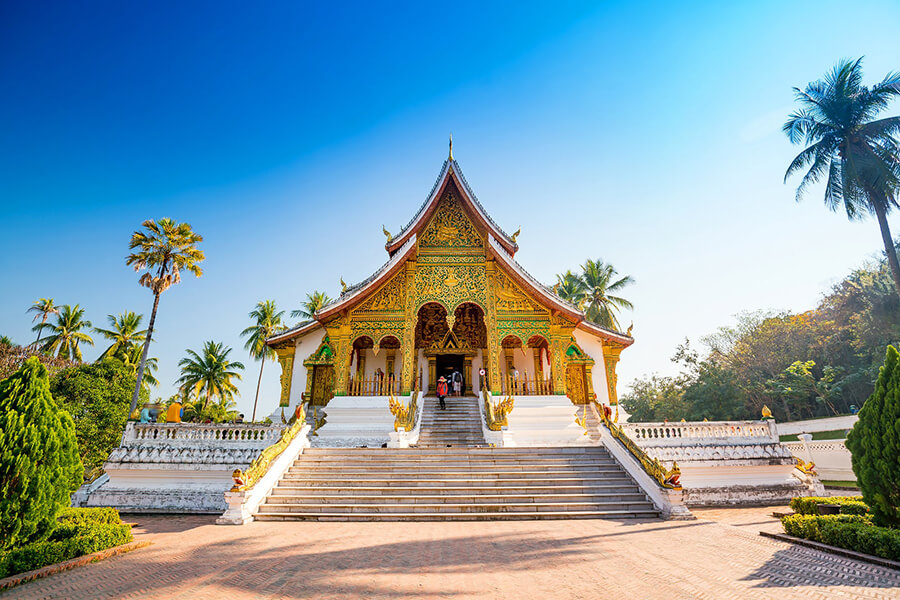The UNESCO World Heritage Site in Laos, represented by the Vat Phou and Champasak Cultural Landscape, is a priceless treasure of history, culture, and spirituality. Nestled in the southern region of the country, where the Mekong River holds a central role in daily life, this World Heritage Site reflects the cultural and religious development of Southeast Asia over thousands of years.
Vat Phou, an ancient Hindu temple, offers a glimpse into the world of ancient worship, faith, and spirituality. Through the ages and religious transformations, it continues to shine with its architectural beauty and spiritual significance. The Champasak Vat Mienu, with its historical relics and educational commemorations, takes us into the realm of knowledge and the dissemination of wisdom.
The World Heritage Site in Laos is not merely a historical museum open to international visitors but also an integral part of the lives and spirituality of the Laotian people. It embodies a unique fusion of knowledge, reverence, and architectural beauty, representing a significant facet of the world heritage that the people of Laos proudly protect and share with the world.
Luang Prabang – Laos Unesco World Heritage Sites
Nestled in the heart of northern central Laos, the enchanting city of Louangphabang, sometimes written as Luang Prabang in the pre-1975 Lao script, graces the eastern bank of the majestic Mekong River. Here, at the convergence of the Nam Khan and Mekong Rivers, lies a place of profound cultural significance. In 1995, UNESCO recognized this hidden gem as a World Heritage Site, a testament to its rich cultural heritage.
Louangphabang carries the weight of history as the former capital of Laos, an emblem of the nation’s storied past. The city is revered for its sacred sites, boasting a multitude of Buddhist temples and serene monasteries that punctuate its landscape. The spiritual aura of these sites invites both pilgrims and curious travelers to bask in their tranquility.
This captivating city is not just a cultural treasure; it also plays a vital role in the administrative landscape of Laos. Situated within the Louangphabang District in the heart of the Louangphabang Province, it serves as the provincial capital and an administrative hub.
Louangphabang’s geographical placement is equally fascinating. It rests approximately 300 kilometers (190 miles) to the north of Vientiane, the bustling capital of Laos, on the map of this enchanting nation. The city’s current population hovers around 56,000, with a significant portion—approximately 24,000 residents—choosing to call the UNESCO-preserved area their home, preserving the city’s cultural legacy for generations to come.
The name “Luang Phabang” carries a rich tapestry of meanings, deeply rooted in the linguistic and cultural heritage of the region. This enchanting name weaves together elements from various indigenous languages, offering a unique perspective on the city’s significance.
The word “Luang” finds its origin in the Tày – Thái languages, where it traditionally denotes “big” or “large.” Over time, the Lao language has transformed “Luang” into a distinctive term, designating an individual of noble stature or high authority, evoking notions of a dignitary or a revered figure.
“Phabang,” on the other hand, draws its roots from the Pali language, a sacred language in Buddhism. In Pali, it signifies the Lord Buddha or a Buddhist monk. When prefixed to a proper noun for a person, “Phabang” bestows an aura of sanctity and exaltation upon that individual. Complementing this spiritual element, the Lao word “bang” adds a layer of nuance. Originally meaning “thin,” “slender,” or “delicate,” it mirrors similar concepts in the Tày – Thái languages.
In a poetic interpretation, the amalgamation of these three words, “Luang Phabang,” can be envisioned as “Revered Figure of Thinness.” This phrase carries a profound symbolism, suggesting a person of both dignity and spiritual elevation.
In the Tày – Nùng language, “luông” translates to “Dragon,” “phạ” evokes the concept of “Heaven,” and “bang” retains its essence of thinness. When woven together in the fabric of this language, it paints the picture of a “Heavenly Dragon of Thinness.”
Throughout history, this location has donned various names, as seen in ancient Vietnamese documents. It was known as Nam Chưởng, and in the annals of history, it has appeared as Lao Long Quốc, colloquially referred to as Lào Qua Gia, Mường Luông, or Mường Luống.
Thus, the name “Louangphabang” resonates as the “Royal Image of the Lord Buddha,” an appellation that reflects the city’s profound cultural and spiritual heritage. In the annals of time, this captivating city has been known by several historical names, including the venerable Xieng Thong.
Vat Phou – Associated Ancient Settlements within the Champasak Cultural Landscape
Vat Phou, also known as Vat Phu, is a captivating Khmer Hindu temple complex nestled amidst the serene landscapes of southern Laos. It stands as one of the most ancient places of worship in Southeast Asia, echoing centuries of devotion and reverence. Located at the base of the formidable Mount Phou Khao, this temple-mountain is a testament to the profound spiritual heritage of the region, just 6 kilometers (approximately 3.7 miles) from the tranquil shores of the Mekong River in Champasak Province.
The origins of Vat Phou trace back to a time when spirituality intertwined with the fabric of the land. The site began as a sanctuary, centered around a sacred spring, and served as an offering place to honor a mighty tutelary spirit, its roots reaching into the depths of prehistoric times. The earliest megalithic stone structures graced this hallowed ground, with their foundations laid as far back as the second century BCE. These ancient structures consisted of two stone cells, an intricately carved crocodile, a serpent-shaped staircase, and several platforms for offerings.
The transformation of Vat Phou gained momentum with the dawn of the 7th century when one of the first pre-Angkor brick buildings emerged, becoming the focal point for subsequent architectural endeavors. Most of the surviving structures we see today emerged during the Angkor period, flourishing between the 11th and 13th centuries.
Vat Phou’s history is deeply intertwined with the city of Shrestapura, which once flourished along the banks of the Mekong, directly east of Lingaparvata Mountain, now known as Phou Khao. As the fifth century unfolded, Shrestapura rose to prominence, becoming the capital of a kingdom associated with the Chenla Kingdom and Champa. It was during this time that the first structure on the sacred mountain was erected, further enhancing its spiritual significance. The mountain, crowned with a lingam-shaped protuberance, was revered as the dwelling place of Shiva, while the flowing river symbolized the sacred Ganges.
Vat Phou’s cultural tapestry expanded as it became a part of the vast Khmer Empire centered around Angkor to the southwest. The temple complex’s early connection with this empire can be traced back to the reign of Yasovarman I in the early 10th century. Shrestapura was eventually succeeded by a new city during the Angkorian period, situated directly south of the temple.
Over time, the original buildings evolved and were replaced, with some stone blocks repurposed in the construction. The temple, as we see it today, primarily took shape during the Koh Ker and Baphuon periods of the 11th century. Subsequent minor modifications were made over the following centuries, reflecting the evolving religious and architectural landscape. Like many temples within the Khmer Empire, Vat Phou eventually transitioned to Theravada Buddhist use.
This legacy of spirituality continued even as the region came under Lao control, with an annual festival celebrated on the temple grounds each February. Despite the passage of time, minimal restoration work has been undertaken, except for the preservation of boundary markers along the path. In recognition of its cultural and historical significance, Vat Phou was rightfully designated as a UNESCO World Heritage Site in 2001, ensuring its preservation for generations to come.

